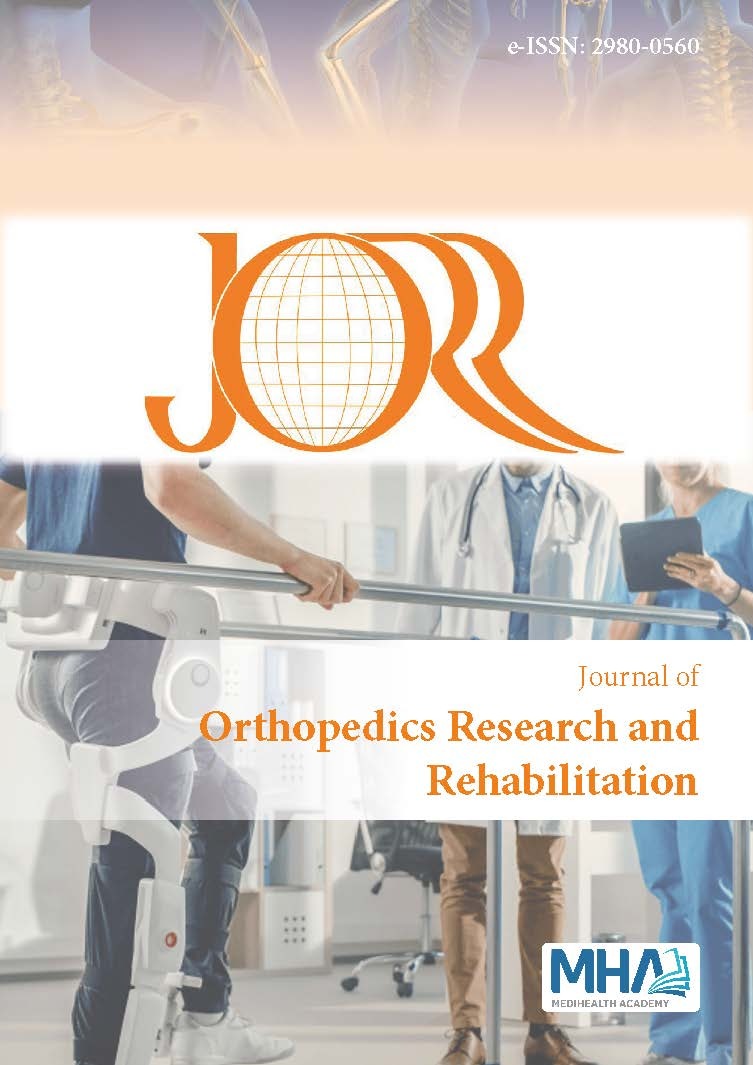1. Sarabadani Tafreshi E, Nodehi Moghadam A, Bakhshi E, Rastgar M.Comparing scapular position and scapular dyskinesis in ındividualswith and without rounded shoulder posture. Physical Treatments-Specific Physical Therapy J. 2015;5(3):127-136.
2. Han JT, Lee JH, Yoon CH. The mechanical effect of kinesiology tapeon rounded shoulder posture in seated male workers: a single-blindedrandomized controlled pilot study. Physiotherapy Theory Pract.2015;31(2):120-125.
3. Tapanya W, Neubert MS, Puntumetakul R, Boucaut R. The effects ofshoulder posture on neck and shoulder musculoskeletal loading anddiscomfort during smartphone usage. Int J Industrial Ergonomics.2021;85:103175.
4. Janwantanakul P, Sitthipornvorakul E, Paksaichol A. Risk factors forthe onset of nonspecific low back pain in office workers: a systematicreview of prospective cohort studies. J Manipulative Physiol Ther.2012;35(7):568-577.
5. Chester R, Smith TO, Hooper L, Dixon J. The impact of subacromialimpingement syndrome on muscle activity patterns of the shouldercomplex: a systematic review of electromyographic studies. BMCMusculoskelet Disord. 2010;11(1):45.
6. Kibler WB, McMullen J. Scapular dyskinesis and its relation toshoulder pain. J Am Acad Orthop Surg. 2003;11(2):142-151.
7. Ekstrom RA, Donatelli RA, Soderberg GL. Surface electromyographicanalysis of exercises for the trapezius and serratus anterior muscles. JOrthop Sports Phys Ther. 2003;33(5):247-258.
8. Yılmaz EA. Dinamik nöromüsküler stabilizasyon (DNS). Res SportEducat Sci. 2022;24(2):60-64.
9. Frank C, Kobesova A, Kolar P. Dynamic neuromuscular stabilization& sports rehabilitation. Int J Sports Phys Ther. 2013;8(1):62.
10. Kim TW, An DI, Lee HY, Jeong HY, Kim DH, Sung YH. Effects ofelastic band exercise on subjects with rounded shoulder posture andforward head posture. J Phys Ther Sci. 2016;28(6):1733-1737.
11. Colado JC, Garcia-Masso X, Triplett NT, et al. Construct andconcurrent validation of a new resistance intensity scale for exercisewith Thera-Band® elastic bands. J Sports Sci Med. 2014;13(4):758.
12. SENIAM: Surface electromyography for the non-invasive assessmentof muscles. Accessed: May 18, 2016. http://www.seniam.org/
13. Larsen C, Juul-Kristensen B, Olsen H, Holtermann A, Søgaard K.Selective activation of intra-muscular compartments within thetrapezius muscle in subjects with subacromial ımpingement syndrome.A case-control study. J Electromyogr Kinesiol. 2014;24(1):58-64.
14. Myers JB, Pasquale MR, Laudner KG, Sell TC, Bradley JP, LephartSM. On-the-field resistance-tubing exercises for throwers: anelectromyographic analysis. J Athl Train. 2005;40(1):15.
15. Mahdieh L, Zolaktaf V, Karimi MT. Effects of dynamic neuromuscularstabilization (DNS) training on functional movements. Hum Mov Sci.2020;70:102568.
16. Marand LA, Dehkordi SN, Roohi-Azizi M, Dadgoo M. Effect ofdynamic neuromuscular stabilization on balance, trunk function,falling, and spasticity in people with multiple sclerosis: a randomizedcontrolled trial. Arch Phys Med Rehabil. 2023;104(1):90-101.
17. Son MS, Jung DH, You JS, Yi CH, Jeon HS, Cha YJ. Effects of dynamicneuromuscular stabilization on diaphragm movement, posturalcontrol, balance, and gait performance in cerebral palsy. Neurorehabil.2017;41(4):739-746.
18. Gulrandhe P, Kovela RK. The effect of dynamic neuromuscularstabilisation on core strength: a literature review. J Clin Diagnostic Res.2023;17(7):1.
19. Chaitow L, Bradley D, Morrison D. Recognizing and treating breathingdisorders. 2nd ed. Elsevier Health Sciences: 2014:19:11-22.
20. Lee J, Kim D, Shin Y, et al. Comparison of core stabilization techniqueson ultrasound imaging of the diaphragm, and core muscle thicknessand external abdominal oblique muscle electromyography activity. JBack Musculoskelet Rehabil. 2022;35(4):839-847.
21. Yoon HS, You JSH. Reflex-mediated dynamic neuromuscularstabilization in stroke patients: EMG processing and ultrasoundimaging. Technol Health Care. 2017;25(S1):99-106.
22. Okada T, Huxel KC, Nesser TW. Relationship between core stability,functional movement, and performance. J Strength Cond Res.2011;25(1):252-261.
23. Kibler WB, Press J, Sciascia A. The role of core stability in athleticfunction. Sports Med. 2006;36(3):189-198.
24. Sahrmann S. Diagnosis and Treatment of Movement ImpairmentSyndromes. Mosby: 2002.
25. Cools AM, Dewitte V, Lanszweert F, et al. Rehabilitation of scapularmuscle balance: which exercises to prescribe? Am J Sports Med.2007;35(10):1744-1751.
26. Karabay D, Emük Y, Kaya DÖ. Muscle activity ratios of scapularstabilizers during closed kinetic chain exercises in healthy shoulders: asystematic review. J Sport Rehabil. 2019;29(7):1001.
27. Kara D, Harput G, Duzgun I. Trapezius muscle activation levelsand ratios during scapular retraction exercises: a comparative studybetween patients with subacromial impingement syndrome andhealthy controls. Clin Biomech. 2019;67:119-126.
28. Nakamura Y, Tsuruike M, Ellenbecker TS. Electromyographic activityof scapular muscle control in free-motion exercise. J Athl Train.2016;51(3):195.

